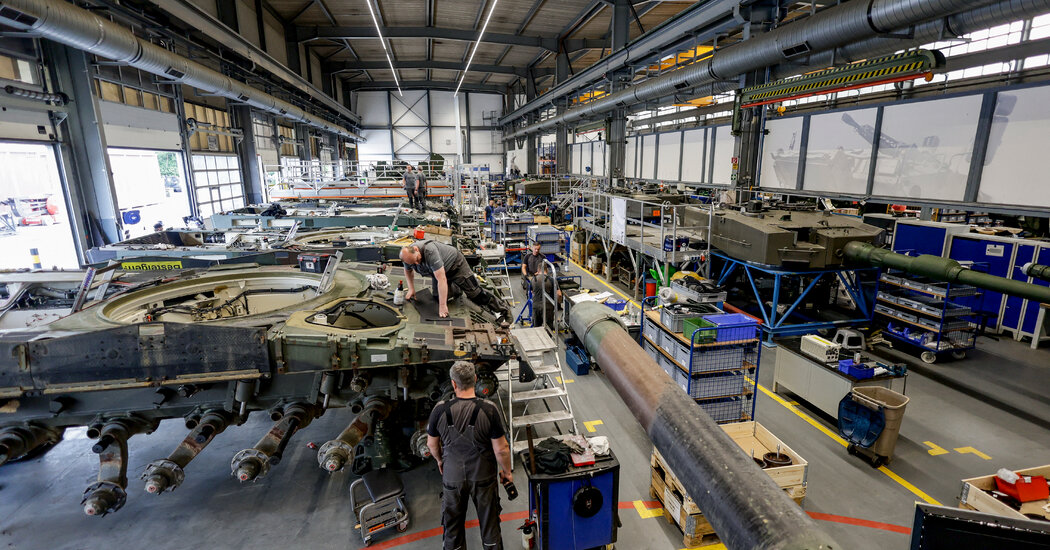The continent’s leaders hope a surge of investment, to fill a security void left by the United States, can ignite growth. It won’t be easy.
Jim TankersleyJeanna Smialek and Melissa Eddy
Reporting from Berlin and Brussels
From Brussels to Berlin, leaders across Europe are getting ready to spend hundreds of billions to rebuild their armies. The spending, they say, is necessary to prepare Europe for the dangers of a world where the United States no longer guarantees its security.
But many of them are also hoping that the surge of money will have another important effect: revitalizing the continent’s slumping industrial sector and opening a new front for economic growth.
That connection between defense investment and competitiveness is one of the topics European leaders are likely to discuss when they meet in Brussels on Thursday, after the European Commission publishes a long-awaited paper on the future of European defense on Wednesday.
“Economic strength and Europe’s plan to rearm are two sides of the same coin,” Ursula von der Leyen, president of the European Commission, said in a recent speech, calling the potential investments a “powerful tailwind for important industries.”
But whether that will be the case is far from certain, and the challenges to Europe actually making it happen are enormous.
While there is a growing consensus that new military spending is likely to offer some boost to European economies in the near term, just how much will depend on how well that money is spent and where.
We are having trouble retrieving the article content.
Please enable JavaScript in your browser settings.
Thank you for your patience while we verify access. If you are in Reader mode please exit and your Times account, or for all of The Times.
Thank you for your patience while we verify access.
Want all of The Times? .
Source: www.nytimes.com
